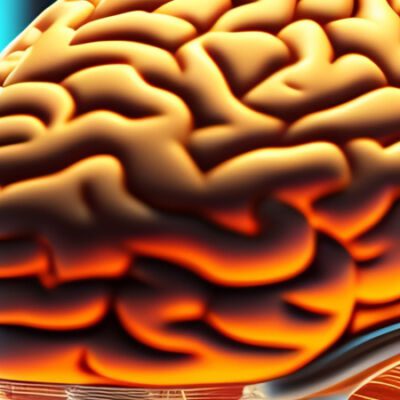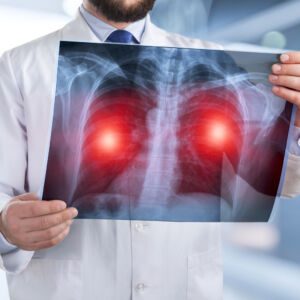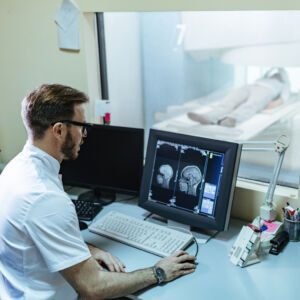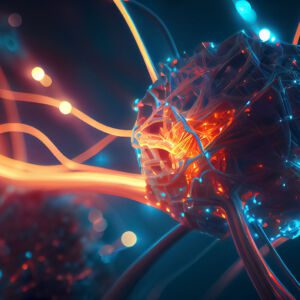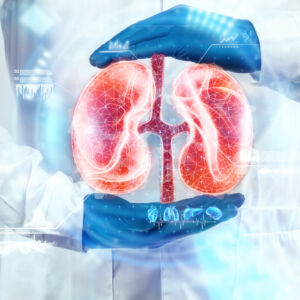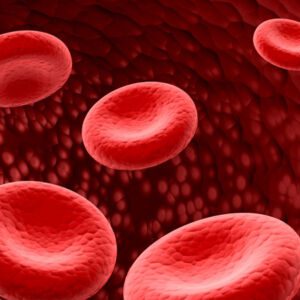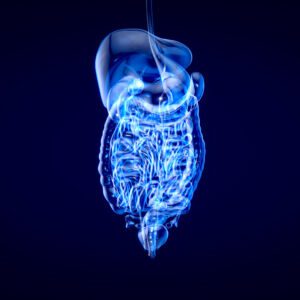Neurology is a medical speciality that focuses on the diagnosis and treatment of disorders of the nervous system.
DISEASES OF THE CENTRAL NERVOUS SYSTEM
Central nervous system (CNS) disorders are conditions that affect the brain, spinal cord and other parts of the central nervous system (conditions treated in our neurology department).
They include degenerative conditions such as Alzheimer’s disease, Parkinson’s disease and multiple sclerosis, as well as more common problems such as stroke, meningitis and brain tumours.
Diseases of the CNS are those that affect the function of nerve cells, such as Alzheimer’s disease, Parkinson’s disease, multiple sclerosis and epilepsy.
The functions of nerve cells are controlled by chemical messengers called neurotransmitters. These messengers are released at synapses (the point of contact between two nerve cells) where they bind to receptors on other nerve cells or muscle cells to trigger electrical activity in these cells.


COGNITIVE DISORDERS
Our neurology department covers all cognitive disorders. A cognitive disorder is a persistent impairment of cognition due to a medical (such as Alzheimer’s disease or multiple sclerosis), psychiatric or neurological condition. It makes it difficult to think, remember and process information.
Cognitive impairment can be gradual or sudden. In some cases, it results from a medical condition such as a stroke, Alzheimer’s disease or traumatic brain injury. In other cases, it may be caused by an underlying mental health problem, such as depression or bipolar disorder.
Cognitive problems can take many forms and occur at any age. They can range from mild memory lapses – such as forgetting what you were going to say – to severe problems with thinking and judgment that make it difficult to carry out everyday tasks.
TREATMENT FOR STROKE
Stroke is a condition in which the blood supply to the brain is interrupted (ischaemic) or insufficient blood reaches the brain (haemorrhagic).
Symptoms depend on the type of stroke and where in the brain it occurs. A stroke can cause long-term disability if it is not treated in time.
Stroke (a condition treated in our neurology department) is a medical emergency and requires immediate medical attention. Stroke can be prevented by changes in lifestyle, medication and diet.
The most common types of stroke are:
- Ischaemic stroke: lack of blood flow due to narrowing of the arteries or blood clots blocking an artery in the brain.
- Haemorrhagic stroke – bleeding in the brain caused by ruptured blood vessels or haemorrhagic tumours in the brain tissue itself.
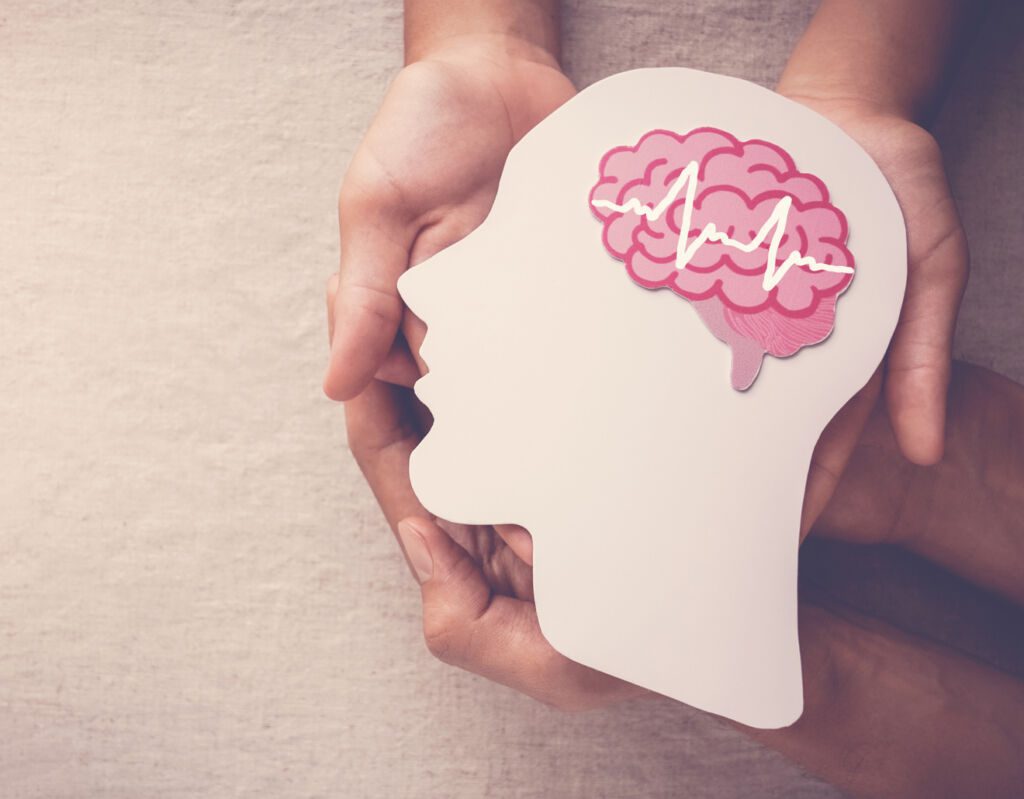
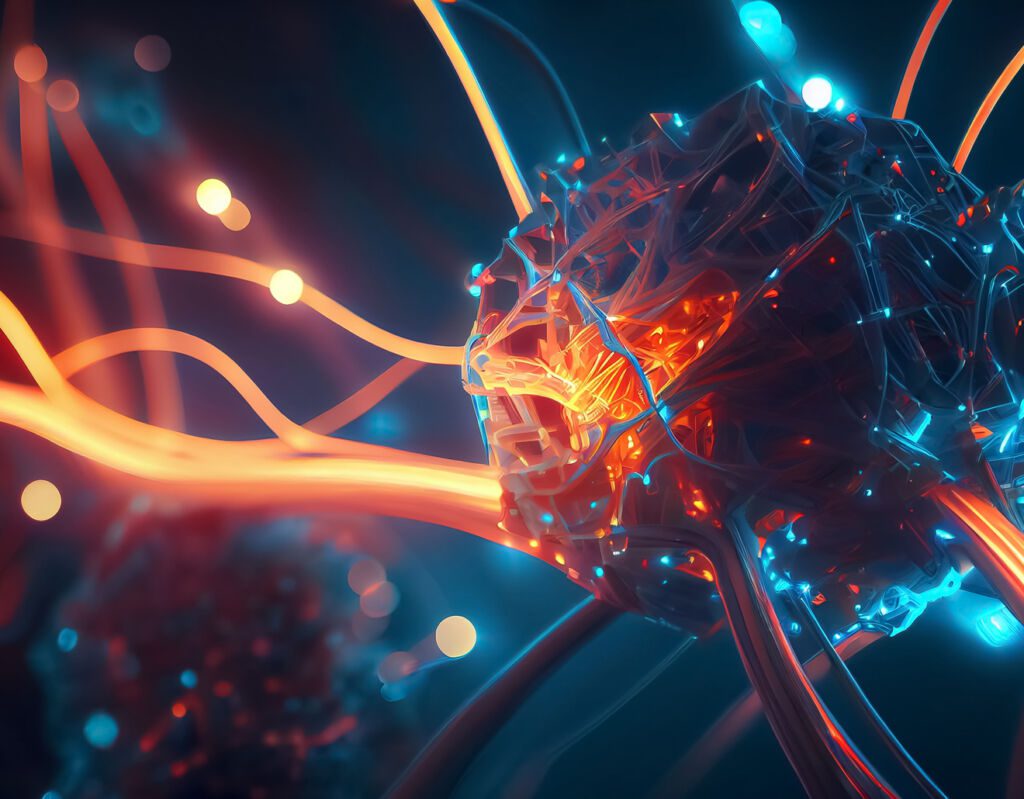
NEURODEGENERATIVE DISEASES
Treatment of neurodegenerative diseases such as Alzheimer’s disease and Parkinson’s disease.
Neurodegenerative diseases are a class of diseases that involve the progressive loss of nerve cells, often accompanied by the dysfunction or death of other types of cells in the brain. The term “neurodegenerative” refers to the loss of neurons over time and the resulting degree of clinical impairment.
Neurodegenerative diseases (diseases treated in our neurology department) can be caused by infectious agents (e.g. prion diseases), metabolic defects (e.g. lysosomal storage disorders) and genetic mutations (e.g. Huntington’s disease). Some neurodegenerative diseases are known and have obvious genetic causes, while others occur spontaneously and have no known cause or genetic link.
WHAT IS A HEADACHE?
Migraine (take in charge among Neurology department) is a chronic and often disabling disorder that affects millions of people worldwide. It is characterised by recurrent attacks of moderate to severe head pain (migraine), usually unilateral and stabbing. The pain may be accompanied by nausea, vomiting and sensitivity to light, sound or odours.
Migraines can have a serious impact on a person’s quality of life. For example, they can cause absenteeism at work or school and interfere with social activities.
Migraines usually begin in childhood or adolescence and often disappear by the third decade of life. Women are three times more likely to get migraines than men, and they affect about 18% of women of childbearing age.
Migraines can be triggered by a number of factors, including stress, certain foods or drinks, lack of sleep, loud noises, bright lights or sunlight. They are associated with activation of the trigeminovascular system and the release of pro-inflammatory neuropeptides such as calcitonin gene-related peptide (CGRP).
WHAT ARE SPEECH DISORDERS?
Speech disorders are conditions in which a person has difficulty pronouncing words or sentences correctly and clearly. They are also known as communication disorders.
Some speech disorders can be treated with medication and therapy, while others may require surgery to repair the problem area of the brain.
The most common types of speech disorders are:
– Apraxia of speech, which is a disorder that prevents sounds from being pronounced correctly and in the right order. This disorder can occur when the part of the brain that controls voluntary muscle movements (motor cortex) is damaged.
– Stuttering, which is an involuntary repetition of sounds or syllables within words (also called stammering) that occurs during speech production. Stuttering usually begins in childhood but can continue into adulthood if not treated properly.
– Dysarthria, which is a joint disorder caused by weakness or paralysis of the muscles used for speech production.
WHEN SHOULD YOU SEE A NEUROLOGIST AND WHAT CONDITIONS ARE TREATED?
Neurologists are doctors who specialise in diagnosing and treating neurological disorders. They may be general neurologists or neurologists who specialise in a particular area of the nervous system (such as epilepsy, movement disorders, pain management, headaches or sleep disorders). Some neurologists may also have sub-specialist training in areas such as psychiatry or physiotherapy.
The American Academy of Neurology defines neurology as “the study of diseases of the brain, spinal cord and peripheral nerves”. A neurologist treats conditions such as stroke, multiple sclerosis, Alzheimer’s disease and Parkinson’s disease. The aim of treatment is to improve symptoms and minimise disability in patients with these conditions.
Neurologists can treat patients with a wide range of neurological conditions, including:
- Headaches
- Epilepsy
- Seizures
- Movement disorders (such as essential tremor)
- Balance disorders (such as benign paroxysmal positional vertigo)
- Stroke
WHAT TESTS DOES A NEUROLOGIST CARRY OUT?
Neurologists are doctors who specialise in diagnosing and treating disorders of the brain and nervous system, such as Alzheimer’s disease, epilepsy, Parkinson’s disease and stroke.
Neurologists often use medical tests to help diagnose patients with neurological problems. Tests may include:
– Blood tests: These show whether there is damage to the brain or nervous system. Blood tests can also show whether a person has been exposed to certain viruses that cause diseases such as meningitis or encephalitis (inflammation of the brain).
– Electroencephalogram (EEG): A neurologist uses electrodes placed on the scalp to record the electrical activity of the brain. This helps to determine if there is an abnormality in the electrical activity of the brain that could be causing symptoms such as epileptic seizures.
– Magnetic resonance imaging (MRI): MRI produces detailed images of the internal structures of the body, including the head and neck. It uses powerful radio waves and magnets to produce detailed images of organs inside the body without using X-rays or exposure to radiation.
– Lumbar puncture: A small amount of cerebrospinal fluid is removed from the lower back using a needle inserted between two vertebrae of the spine. The fluid is then analysed.
We present to you some articles relating to pathologies treated in our Mediterranean clinic, with an effective and efficient medical and paramedical team.
Creutzfeldt-Jakob disease (CJD) is a rare, degenerative and fatal brain disorder caused by an infectious protein called a prion. The disease causes brain tissue to harden and die, affecting memory, behaviour and other mental functions.
CJD occurs at a rate of one case per million populations each year. The average age of onset is 68. There are three types of CJD: sporadic (sCJD), acquired (aCJD) and genetic (gCJD).
Symptoms of Creutzfeldt-Jakob disease:
Symptoms of CJD are varied and may include personality changes, vision problems, mood swings, difficulty swallowing, difficulty walking, poor coordination, muscle contractions, dementia, insomnia, hallucinations or delusions, memory loss or confusion, depression or anxiety, speech or swallowing problems, difficulty breathing, and motor problems.
Cluster headaches are a type of headache that usually affects only one side of the head. It is the most painful type of headache and may be accompanied by other symptoms such as nausea, vomiting and sensitivity to light or sound.
The exact cause is unknown, but it is thought to be related to changes in the levels of certain chemicals in the brain.
Headaches usually occur at the same time each year, often over several weeks or months. They usually last between 15 minutes and three hours and can occur several times a day.
Autism is a developmental disorder that affects the way a person communicates and connects with others. Autism spectrum disorders cover a wide range of symptoms and signs, from mild to severe.
Autism can cause significant difficulties with social interaction, communication and behaviour. Although many treatments are available to help people with autism, there is no known cure.
The Centers for Disease Control and Prevention (CDC) estimates that about one in 68 children has an autism spectrum disorder (ASD). However, these figures vary depending on the age group and gender of the child. For example, for children born in 2014, the CDC estimates that about 1 in 42 boys and 1 in 189 girls will be diagnosed with ASD before the age of 20.
Autism is not associated with an intellectual disability or learning disability. However, some people with ASD may have difficulties in certain areas of development, such as social interaction or communication, while others may have average or above average intelligence.
Guillain-Barré syndrome (GBS) is a nervous system disorder in which a person’s immune system damages nerve cells, causing muscle weakness and sometimes paralysis. The most common symptoms are weakness or tingling in the legs, arms and upper body. These symptoms can spread to the muscles of the chest, throat and face. In some people, only the legs are affected.
The cause of GBS is unknown (idiopathic): It usually follows an infection with a virus or bacteria that causes inflammation of the nerves. GBS can also develop after infection with Campylobacter jejuni or influenza.
Attention deficit/hyperactivity disorder (ADHD) is a brain disorder that makes it difficult to concentrate, maintain concentration and control behaviour. Symptoms can appear very early in life, but often do not appear until school-age children face the challenges of learning at school.
The symptoms of ADHD are not the same for everyone. Some people have few symptoms, while others have many. Symptoms of ADHD occur in different settings, such as at home or at school.
The main signs of ADHD are:
- Restlessness, fidgeting and rocking.
- Inability to sit when expected to do so.
- Not seeming to listen when spoken to directly.
- Avoiding eye contact during conversation or when answering questions.
- Talking excessively without necessarily saying anything relevant to the topic at hand.
Attention deficit/hyperactivity disorder (ADHD) is a brain disorder that makes it difficult to concentrate, maintain concentration and control behaviour. Symptoms can appear very early in life, but often do not until school-age children face the challenges of learning at school.
The symptoms of ADHD are not the same for everyone. Some people have few symptoms, while others have many. Symptoms of ADHD occur in different settings, such as at home or at school.
The main signs of ADHD are:
– Restlessness, fidgeting and rocking
– Not being able to sit down when asked
– Not seeming to listen when spoken to directly
– Avoiding eye contact during conversation or when answering questions
– Talking excessively without necessarily saying anything relevant to the topic at hand.
Botulism is a rare but serious paralytic disease caused by a nerve toxin produced by the bacterium Clostridium botulinum. The disease starts with weakness in the arms and legs. Blurred vision, drooping eyelids and speech problems soon follow. Botulism can cause fatal respiratory failure by paralysing the muscles needed to breathe.
Botulism is not contagious, but it can be spread through contaminated food or injury.
Botulism is treated with an antitoxin that blocks the action of the toxin circulating in the blood. Wound care to prevent infection and supportive care in hospital are essential for recovery from botulism.
Signs and symptoms usually appear from 18 to 36 hours after exposure to the toxin:
– Double vision (diplopia).
– Blurred vision (mydriasis).
– Drooping eyelids (ptosis).
– Difficulty swallowing or speaking (dysphagia or dysphonia).
– Difficulty speaking (hypophonia).
Muscle weakness progressing to paralysis of the respiratory muscles and, if left untreated, death by suffocation within a few days.
A traumatic brain injury (TBI) occurs when a sudden trauma damages the brain. It is usually caused by a blow to the head, but can also be caused by penetrating injuries such as gunshots or stabbings.
Head injuries are classified as mild, moderate or severe depending on the symptoms. The severity of a head injury is determined by the amount of damage to the inside of the skull. A mild head injury may cause no symptoms or only mild symptoms that quickly disappear. Moderate head trauma can cause confusion, memory and attention problems that last more than a day or two. Severe head trauma can result in loss of consciousness, amnesia (memory loss), long-term disability or even death.
Traumatic brain injuries can be classified as:
– Primary – caused by a direct impact to the head, such as a fall or car accident.
– Secondary – caused by acceleration/deceleration forces, such as whiplash or head shaking.
Symptoms vary depending on the type of head injury; some are common to all forms of head injury, while others are more specific to certain types of injury. The most common symptoms are headache (constant or episodic), drowsiness or lightheadedness, loss of consciousness, confusion (not knowing where you are), amnesia (memory loss), difficulty thinking clearly or concentrating, tiredness or weakness, double or blurred vision, dizziness.
A concussion is a type of traumatic brain injury (TBI) that can alter the normal functioning of the brain. A concussion can be caused by a direct blow to the head, face or neck, such as a fall, sports injury or car accident. Concussions are also caused by the brain tremors inside the skull.
Concussions are usually mild but can be serious. The effects of concussion can be temporary or permanent and may include changes in memory and attention span, confusion and difficulty concentrating, depression, irritability and sleep problems.
Concussion is a complex pathophysiological process in which an acute injury leads to a localised loss of energy in brain tissue, resulting in impaired function in a several areas, including level of consciousness (LOC), postural stability (PTA), fine motor coordination and balance (PMA), (PTA), fine motor coordination (FMC), verbal learning and memory (VM&M), processing speed (PS), attention (AF), balance (B), gait/ambulation (GA), pain perception (PP) and emotion regulation (ER).
Common symptoms of concussion include:
– Headache.
– Dizziness or loss of balance.
– Confusion or feeling “foggy”.
– Tiredness or feeling tired.
– Nausea (stomach pain).
Encephalitis is an inflammation of the brain. Symptoms of encephalitis range from mild to severe and can be life-threatening.
Encephalitis causes swelling of the brain, which can lead to a range of neurological problems. Encephalitis is caused by a variety of viruses and bacteria, including herpes simplex virus type 1 (HSV-1) and varicella- zoster virus (VZV). It can also be caused by other types of infection or autoimmune diseases.
What are the symptoms of encephalitis?
– Symptoms depend on how long you have encephalitis and where the infection is in the brain. There are two main types: acute encephalitis and subacute /chronic encephalitis.
* Acute encephalitis comes on suddenly and usually lasts less than six weeks. It is usually caused by viral infections such as HSV-1 or VZV.
* Subacute/chronic encephalitis develops slowly over weeks or months, initially affecting only certain parts of the brain before spreading to the whole brain over time. Subacute/chronic encephalitis can be caused by many different viruses and bacteria, including HSV-1, VZV, and herpes simplex virus.
Amyotrophic lateral sclerosis (ALS) is a rare genetic disease characterised by muscle weakness and atrophy (wasting). It is also known as familial ALS and Charcot-Marie-Tooth disease type 2 (CMT2).
The disease was first described in 1868 by Jean-Martin Charcot, who thought it was a form of muscular dystrophy. In 1908, William Gowers identified the clinical features of the disease and classified it as a type of neuropathy (nerve degeneration). In 1916, Frederick Friedreich suggested that Charcot’s disease, amyotrophic lateral sclerosis, was in fact a hereditary disease. The first gene associated with Charcot disease was identified in 1993.
The main symptoms are progressive muscle weakness and atrophy, leading to difficulty moving and eventually paralysis. There may also be cramps and spasms in the arms and legs.
Charcot’s amyotrophic lateral sclerosis (ALS) is incurable, but there are treatments that can help manage symptoms and improve quality of life. These include physiotherapy, speech therapy and occupational therapy.
Neuralgia is a term used to describe severe or shooting pain in the nerves of the face, head or neck. It is usually caused by nerve irritation, which may be due to injury or inflammation.
The pain can vary in intensity and frequency. It can be constant or periodic, with episodes lasting from minutes to hours. Pain may be accompanied by other symptoms such as weakness, numbness, tingling and swelling in the area of the irritated nerve.
The cause of neuralgia varies greatly depending on the nerve involved. The most common causes are
Nerve damage from surgery, infection (such as shingles) or trauma (such as whiplash).
Infections such as Lyme disease (borreliosis), Rocky Mountain spotted fever (RMPF) or viral infections such as herpes simplex virus type 1 (HSV1).
Degenerative diseases such as multiple sclerosis (MS), Parkinson’s disease, Alzheimer’s disease and stroke.
Sleepwalking is a sleep disorder in which people get up and walk while still asleep. Sleepwalking can occur at any age and is not related to intelligence. Sleepwalking can occur once or be a recurring problem. It can also happen when a person is tired or stressed.
Sleepwalkers often have no recollection of their actions during episodes. The person usually walks in deep sleep without realising what they are doing or where they are going. When they wake up, they may be disoriented or confused and have no idea how they got back to bed.
Sleepwalking usually occurs during the first two hours of sleep after falling asleep and rarely lasts more than 30 minutes. However, some people may sleepwalk for much longer.
Symptoms:
People with sleepwalking may:
– Walk around their room or house, often taking very long steps or even running
– Perform repetitive actions such as counting, washing their hands or brushing their teeth
– Talk about what they are doing in their sleep, as if they were awake.
– Not remembering the event afterwards
Neurological disorders are unfortunately quite common, affecting millions of people worldwide. In this article, we will explore how to understand and treat these disorders, providing valuable information for patients and their loved ones.
Parkinson’s disease is a disorder of the central nervous system caused by the destruction of nerve cells.
L’attaque cérébrale AVC touche des millions de personnes chaque année dans le monde entier. Le phénomène est donc devenu très alarmant.
You ask, our teams answer.
F.A.Q
Neurology is a medical speciality that deals with disorders of the nervous system, i.e. the brain, spinal cord and nerves. It’s a broad field of medicine that overlaps with other specialities such as psychiatry (mental health), ophthalmology (eye care), cardiology (heart care) and paediatrics (child development).
The nervous system is made up of the brain, spinal cord and nerves. The brain is the centre of all functions and coordinates the activities of all parts of the body. The spinal cord is a tube-like structure that runs from the base of the skull to where it joins the tailbone (coccyx). The spinal cord carries signals between the brain and parts of the body such as the arms and legs. Nerves are the fine wires that carry these signals from one part of the body to another.
Many factors can affect the nervous system, including cancer or tumours in or around the nervous system, injury or trauma, infection such as meningitis, blood clots, stroke or bleeding in the brain, degenerative diseases such as Alzheimer’s, genetic conditions such as Down’s syndrome, exposure to toxic chemicals such as lead poisoning, alcohol or drug abuse, stress and anxiety, depression and more.
Multiple sclerosis (MS) is a chronic inflammatory demyelinating disease of the central nervous system. Multiple sclerosis can cause a wide range of symptoms, including physical, mental and sometimes psychiatric problems.
Multiple sclerosis is an autoimmune disease in which the body’s immune system attacks and destroys the myelin sheath that protects nerve fibres in the brain and spinal cord. This damage inhibits the transmission of nerve signals in the brain, affecting motor skills, sensation, balance and other functions.
Symptoms: The symptoms of multiple sclerosis vary from person to person, but usually appear between the ages of 20 and 40. They include:
– Vision problems – blurred or double vision; difficulty moving the eyes or eye pain; blind spots in the field of vision; flashes of light; loss of colour vision; eye pain and sensitivity to light; nystagmus – rapid, involuntary eye movements
– Balance problems – instability when walking or dizziness; vertigo – feeling of spinning on or around; ataxia – loss of coordination/balance
– Motor problems – weakness or paralysis of arms or legs (usually on one side only); hand or foot tremor
– Sensory problems – numbness in the limbs
The spinal cord is a canal of nerve tissue that runs from the base of the brain to the lower back. It is made up of nerve fibres that carry electrical impulses generated by the brain to different parts of the body and bring sensory information back to the brain.
The spinal cord is protected by several vertebrae and a tough outer layer called the meninges. The meninges also protect and cushion other structures in the head and neck.
The spinal cord carries information between the body and the brain via peripheral nerves. These nerves branch out at different levels of the spinal cord and send signals to specific muscles or organs. Peripheral nerves can be damaged by injury or disease and therefore require special care after surgery.
Epilepsy is a chronic neurological condition that causes recurrent seizures. A seizure is a sudden change in behaviour, sensation or consciousness caused by an excessive and abnormal discharge of electrical activity in the brain.
Epilepsy is generally divided into two broad categories: partial or focal seizures, which start in one part of the brain and can be controlled by medication, and generalised seizures, which affect both sides of the brain at the same time and cannot be controlled by medication.
Not all epilepsies are the same in terms of how they look or how they respond to treatment. The type of epilepsy and the location of the epileptic focus can influence the mild or severe nature of the seizures, their frequency and the way they respond to treatment.
There are generally two types of epilepsy: idiopathic epilepsy (or primary generalised epilepsy), which occurs at birth or in early childhood, and symptomatic epilepsy (or secondary generalised epilepsy), which occurs later in life after brain damage or other pathological processes affecting the brain.



